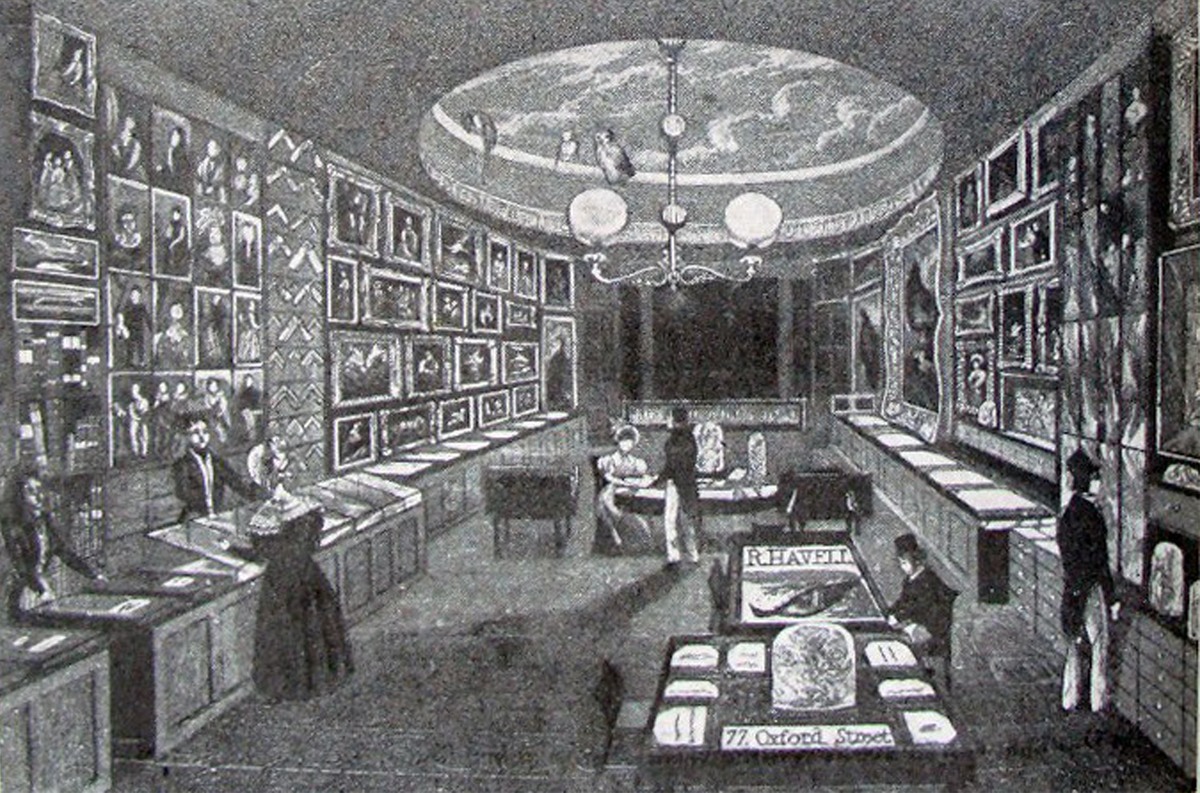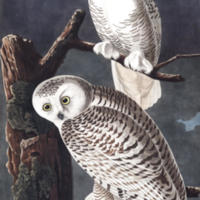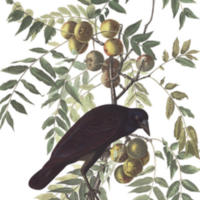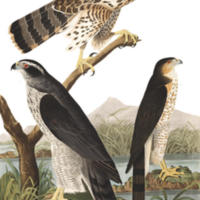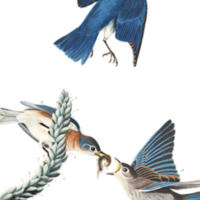Birds of America

In 1826 Audubon arrived in Britain desperately seeking funding and a publisher for Birds of America. His romantic image as an ‘American woodsman’ and his flamboyant personality attracted public attention first in Liverpool then in Edinburgh, and he quickly found sponsors for his art after years of financial struggle. He issued the drawings in sections by subscription, a common way of raising money for very expensive publications. Audubon hired William Home Lizars in Edinburgh as a printer, but just 10 drawings were printed before a strike forced Audubon to move production to the firm of Havell and Son in London.
Havell Junior himself copied and traced almost all of the remaining 425 life-size paintings. He expanded his company to complete the project, employing at least 50 colourists to hand-colour each image. The largest life-size drawing was the size of an American turkey, so the prints were on the largest paper available: Whatman Double Elephant paper. The book is now known as a “Double Elephant folio”.
Subscribers received one large, one medium and three small bird drawings per issue between 1827 and 1838. During this time Audubon consistently promoted his work to new subscribers to maintain his funding, and travelled between America and Britain to supervise printing.
Gallery
Click on an image to view full size.

The birds of America from original drawings, by John James Audubon, Volume 2, issues 21 - 40, plates 101 – 200
1831 – 1834
Production
This giant book contains just one quarter of all of Audubon’s bird images.
Each of his paintings was recreated in print using intaglio techniques; intaglio comes from the Italian “to cut in”.
Printers traced each bird image onto a copper plate and etched the lines into the plate using acid. The plate was covered in ink and the surface wiped clean, leaving ink only in the etched lines. A damp sheet of paper was pressed onto the plate, transferring the ink to the paper. The printers used a process called aquatint to add areas of shading to the images. Colourists hand-coloured each bird using watercolour paint.
Origins of the book
The University's volume of Birds of America was purchased in 1881. Its previous owner was Alexander Walker (1825-1903), a wine and tea merchant who was Dean of Guild in Aberdeen, and a well-known book and art collector. Walker sold his library at Brown’s Salerooms in Aberdeen over several evenings. Birds of America was the star item, featuring prominently on the catalogue’s title page.
The University paid 260 shillings (£13 pounds), which is equivalent to around £1000 today, for the book.

